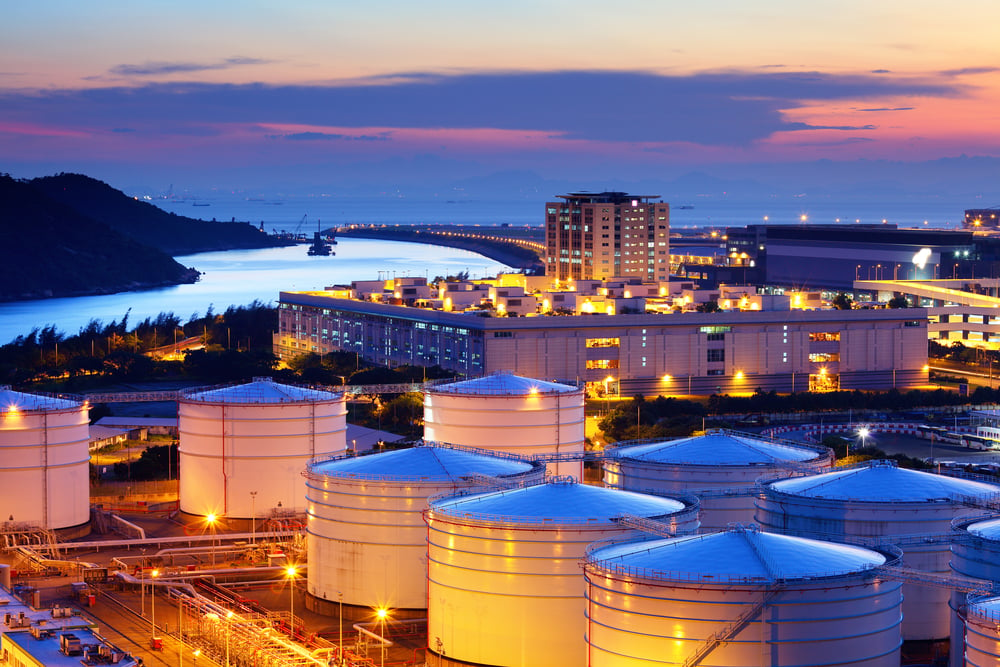Oil Pipeline History & How They Work to Distribute Oil Across the US
It has been 160 years since the first modern oil pipeline was laid and it is still the most cost-effective mode of transporting liquid petroleum and natural gas across the country to help assist the everyday lives of Americans.
There are some 2.8 million miles of oil and gas pipelines in the United States and that number is growing with 9,000 miles currently being built or expanded and another 12,500 miles of pipeline that has been approved or announced.
While crude oil naturally comes to mind when we think of pipelines, it accounts for a small percentage of pipeline transport domestically with the U.S. Department of Transportation Pipeline and Hazardous Material Safety Administration reporting that almost 2.6 million miles of pipelines are dedicated to gas distribution, gathering and transmission.
More than 2 million miles of that pipeline transports natural gas. Obviously pipelines in the United States have come a long way since two wooden boards were formed into a “V” to create a pipeline in the crude oil fields of 19th century Pennsylvania.
The Modern History of Oil Pipelines
We must differentiate between the modern history of oil and its usage by ancient civilizations as far back as 5,000 years ago in places such as Mesopotamia.
The Chinese are even credited with transporting oil via bamboo pipelines, but we are concerned about the modern oil story and for that we need remember two key events:
- Colonel Edwin Drake drilled the first modern oil well in 1859 in Titusville, Pa. and within three years produced three million barrels of crude.
- In early 1901 there was a vast discovery at Spindletop Hill near Beaumont, Tex. Oil reportedly shot up 150 feet in the air for nine days and by 1902 Spindletop was producing 17.4 million barrels. With Henry Ford cranking Model T’s off the assembly line by 1908, America and the oil business would never be the same.
What these events triggered was a great need for an efficient way of transporting oil from the fields where it was discovered to refineries. Pipelines became the answer, especially for finds that were in remote areas that lacked roads and for oil fields not near waterways.
Here is a timeline of oil pipeline development:
- 1862 A crude oil pipeline, relying on gravity, was constructed of wood on the Phillips No. 2 in Oil Creek Valley, Pa.
- 1863 The first modern oil pipeline prototype was put into the field. A 2.5-mile cast iron, 2-inch pipeline with three pumps guided the oil up a 500-foot incline on Tarr Farm. The pipeline, however,
 leaked at the joints and failed.
leaked at the joints and failed. - 1865 The first modern pipeline is laid in Pennsylvania by Samuel Van Syckel. Made of 2-inch wrought iron and highly reinforced joints, it was able to transport up 2,000 barrels of oil daily from the isolated Pithole field across five miles of hilly terrain to the Miller Farm railroad station. The pipeline was powered by Reed and Cogswell steam pumps.
- 1867 First great pipeline company formed, Allegheny Transportation Company with Jay Gould, President of Erie Railroad, on the board. The company owned 500 miles of pipeline by 1871.
- 1881 Jacob Vandergrift’s United Pipe Lines controlled 12,000+ miles of gas gathering and interstate trunk lines.
- 1900 Standard Oil owns approximately 90 percent of all crude oil lines with 6,800 miles of pipelines.
- 1904 Within three years of Spindletop find, Texas has 500+ miles of crude oil pipelines.
- 1905 First cross country pipeline carries oil from Texas, Oklahoma, and Kansas fields to east coast refineries.
- 1920 Rising popularity of the automobile grows the U.S. petroleum industry with 115,000 miles of pipeline now in place.
- 1942 World War II demand for petroleum sees Plantation Pipeline completed, linking Gulf Coast to Northeast.
- 1977 Built during the oil crisis of the 1970s, the TransAlaska pipeline slices from Prudhoe Bay to Valdez. At its peak carrying 15 percent of the U.S. crude oil supply, up to 2 million barrels per day.
How Oil Pipelines Work
Both oil and gas pipelines have a lot in common. They operate around-the-clock 24/7 and are mostly underground and out of sight. Pumps or compressors move the product through the system at a safe pace.
The pipelines are not owned by a single source but managed by more than 1,300 operators. Here are how pipelines operate:
Liquid Petroleum: Includes crude oil, refined products, highly volatile liquids, and carbon dioxide lines. Gathering pipelines in the oil fields, usually 2 to 8 inches in diameter, send the oil to refineries. After refinement, feeder pipelines move the product to larger transmission pipelines, some as large as 48 inches. The refined products (gasoline, jet fuel, home heating oil and diesel fuel) are delivered to terminals with large storage tanks. Typically, they are then trucked to customers, though large facilities, such as airports, may have pipelines directly to them from the terminal.
Natural Gas: Like crude oil, gathering lines move the natural gas to processing plants. The natural gas then moves to transmission lines where it is sent around the country to local distribution companies. The natural gas is then sent to gate stations at local utilities and finally to distribution lines to individual homes and businesses.
Contact GeoCorr today to see how our passionate team can provide individual solutions to meet your pipeline inspection needs.


